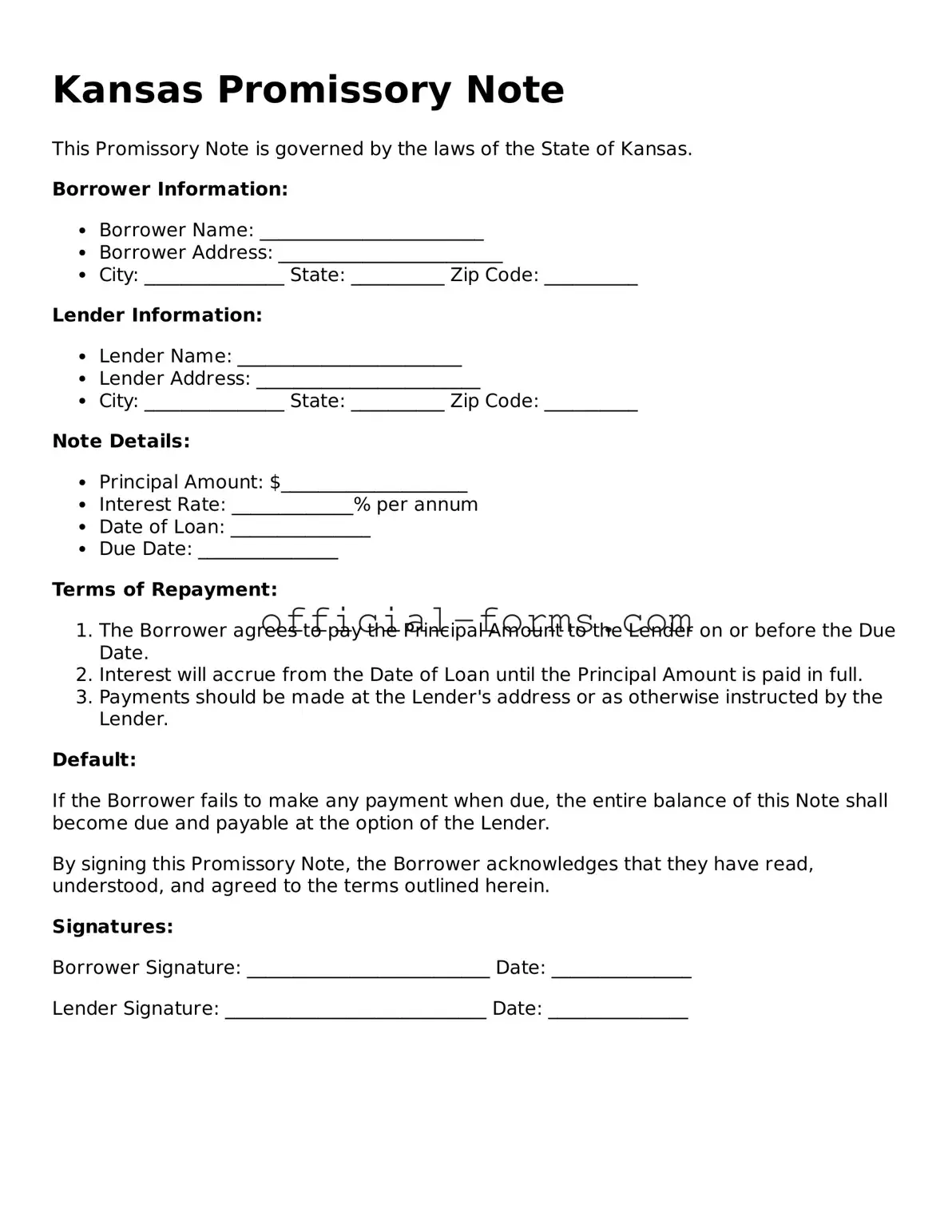When filling out the Kansas Promissory Note form, individuals often encounter several common mistakes that can lead to confusion or legal issues. Understanding these pitfalls is essential for ensuring that the document is completed accurately and serves its intended purpose.
One frequent error is failing to provide complete information about the parties involved. The form requires the names and addresses of both the borrower and the lender. Omitting any of this information can create ambiguity regarding who is responsible for the repayment of the loan. It is crucial to double-check that all details are filled in completely and correctly.
Another mistake people make is neglecting to specify the loan amount clearly. While it may seem straightforward, writing the amount incorrectly or using vague language can lead to misunderstandings later. To avoid this, always write the amount in both numerical and written form. This practice helps to eliminate any potential disputes over the loan amount.
Some individuals also overlook the importance of outlining the repayment terms. The form should clearly state when payments are due, the frequency of payments, and the total repayment period. Without this information, both parties may have different expectations, which can lead to conflict. Clearly defined terms help ensure that everyone is on the same page.
Additionally, people sometimes forget to include interest rates. If the loan is to accrue interest, it is essential to specify the rate and how it will be calculated. This detail can significantly affect the total amount that the borrower will need to repay. If no interest is to be charged, this should also be clearly noted to avoid any misunderstandings.
Finally, one of the most critical mistakes is not signing the document. A Promissory Note is not legally binding without the signatures of both the borrower and the lender. Additionally, having the signatures notarized can provide an extra layer of protection and legitimacy. Ensuring that all required signatures are present is vital for the enforceability of the agreement.
